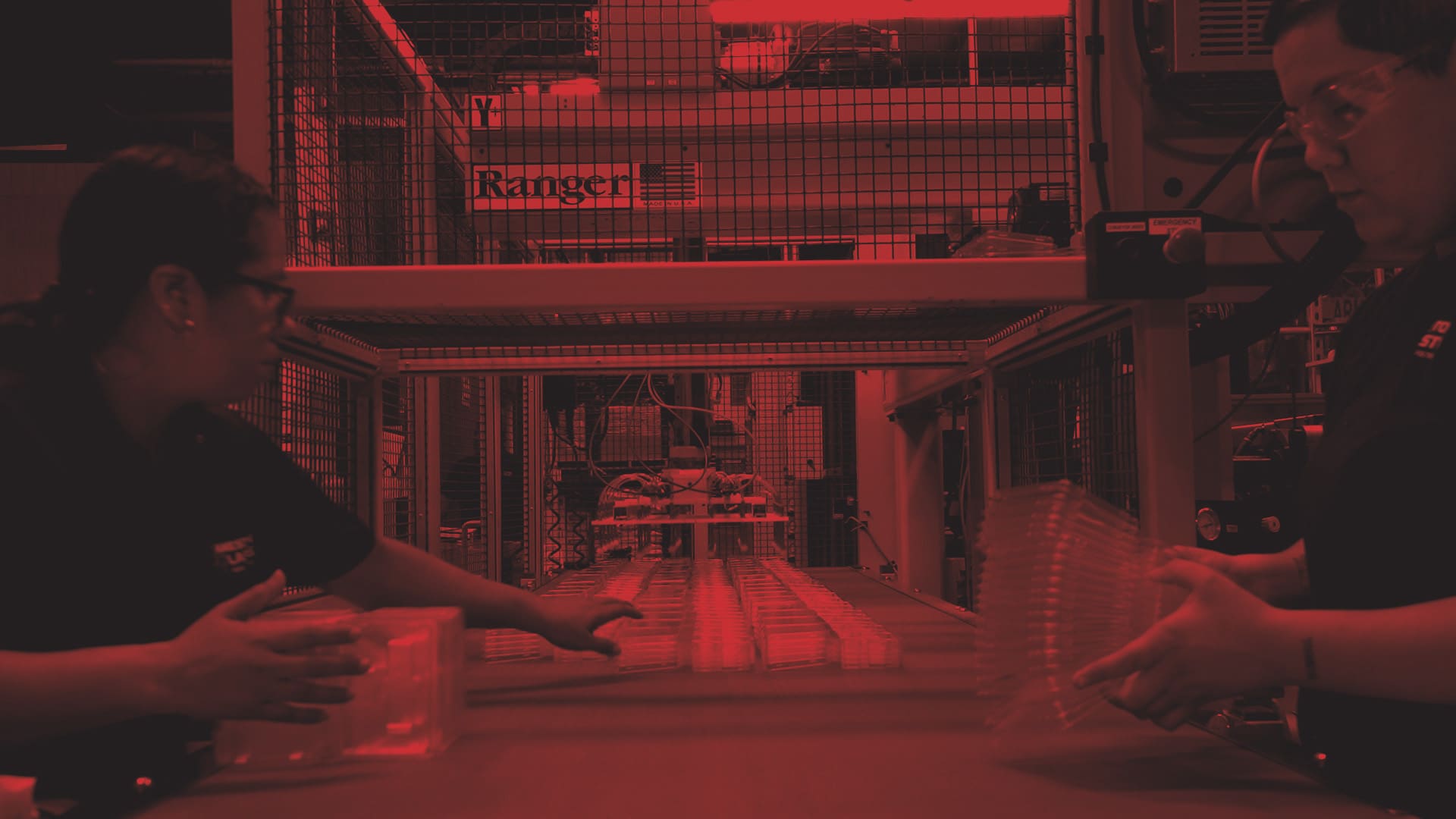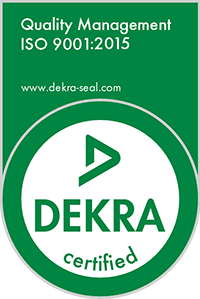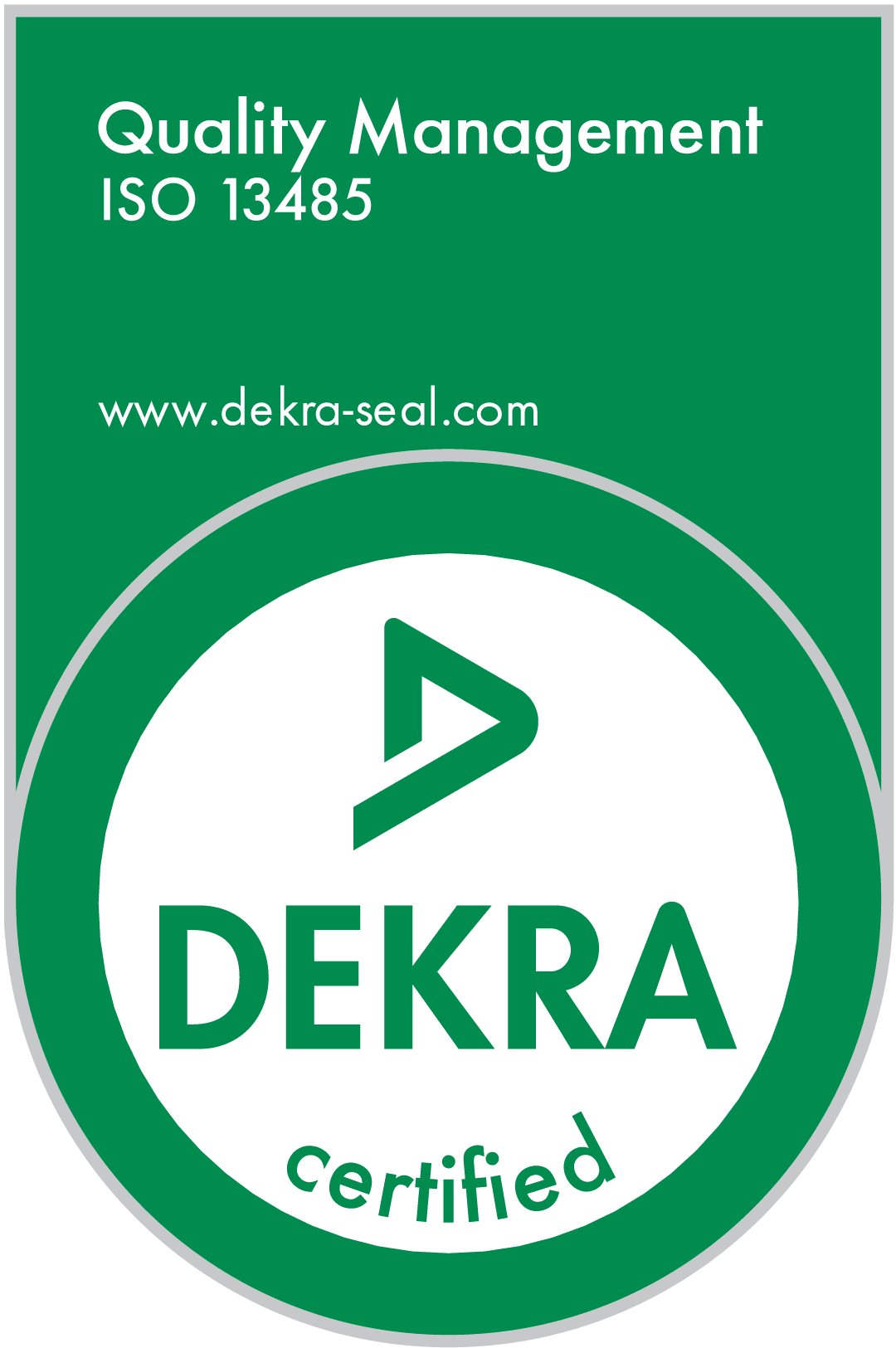Understanding Thermoformed Plastics
Thermoforming heats plastic sheet and shapes it over a mold using vacuum, pressure, or a combination of both. The process works with thermoplastics, which can be reheated and reformed, making them suitable for mechanical recycling.
Jamestown Plastics forms both thin- and heavy-gauge thermoplastics for industries ranging from automotive and medical to electronics and general industrial. Common recyclable materials include APET, PETG, RPET, HDPE, and PP, each chosen for its balance of durability, cost, and sustainability.
Recyclability Starts with the Material
Material selection drives recyclability far more than the forming process itself. Clear, single-polymer parts typically have the best chance of entering a recycling stream. Examples include:
- APET / PETG / RPET: Widely recycled in many regions; RPET also supports closed-loop programs.
- HDPE: Common in rigid packaging and frequently accepted by municipal programs.
- PP: Increasingly adopted in industrial recovery systems.
Colorants, labels, coatings, and multi-material constructions can make recycling more complex. Early collaboration with our engineering team helps balance functional needs with the right sustainable materials.
How Thermoformed Plastics Are Recycled
The recycling process typically includes four key steps:
- Sorting and Identification: Parts are separated by resin type through markings or optical systems.
- Cleaning: Residue and labeling are removed to minimize contamination.
- Size Reduction: Plastic is ground into flakes for easier handling and processing.
- Reprocessing: Flakes are melted and extruded into new sheet or pellet form.
Many thermoformed trays already incorporate post-consumer or post-industrial recycled content, which closes the loop when combined with responsible material collection and reuse programs.
Real-World Challenges to Overcome
Recycling infrastructure differs across regions. Some communities limit accepted resin types, while thin-gauge packaging can be difficult for sorting systems to capture. Contamination from food, adhesives, or layered materials can further reduce recovery rates.
Jamestown Plastics addresses these challenges through design-for-recycling principles, clear labeling, and customer partnerships that reduce waste at every stage of production and product use.
Jamestown Plastics’ Sustainability Commitment
Sustainability and plastic can coexist when handled responsibly. Our approach focuses on long-term, measurable impact:
- Closed-Loop Partnerships: Working with customers to collect, grind, and reform thermoformed trays into new material.
- Post-Industrial Recycling: Reclaiming in-plant scrap for reuse in future production.
- Reusable Packaging Systems: Creating durable trays, totes, and pallets that eliminate single-use waste.
- Material Testing and Guidance: Evaluating biodegradable, recycled, and recyclable materials for real-world performance.
- Product Designs that Follow the 3Rs: The Clamtainer® with Click-It® Closure Technology uses less material, can be reused, and is made from recyclable plastics, including post-consumer and post-industrial content.
Designing for Recyclability
Good design makes recycling achievable. The Jamestown Plastics team integrates sustainability at the engineering level through:
- Single-Resin Construction: Avoiding unnecessary multi-layer builds whenever possible.
- Smart Labeling and Closures: Choosing materials that separate easily from the base polymer.
- Right-Sizing: Reducing thickness and overall material use without sacrificing durability.
- Clear Material Identification: Supporting efficient sorting during recycling.
In-house control of design and tooling allows recyclability to be built into every project. A disciplined quality system certified to ISO 9001:2015 and ISO 13485:2016 maintains consistency from prototype to production.
Collaborating Toward a Circular Future
Small design decisions can make a major difference in recyclability. Early collaboration helps align sustainability goals with manufacturing requirements. Together, we can close the loop on thermoformed plastics, reducing waste, saving material, and extending the life of valuable resources.
Ready to design your next recyclable thermoformed product? Contact Jamestown Plastics today.





